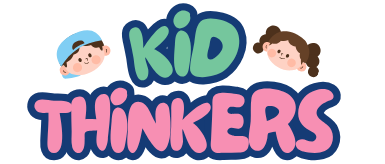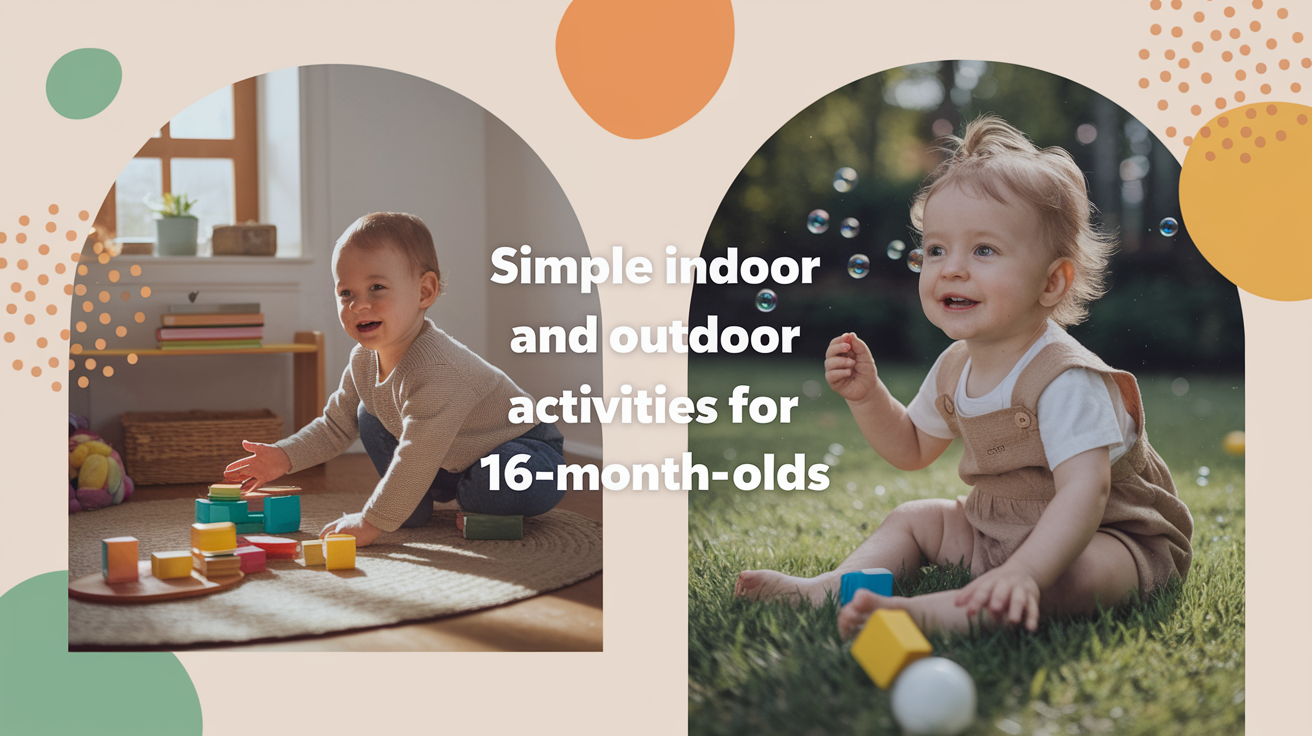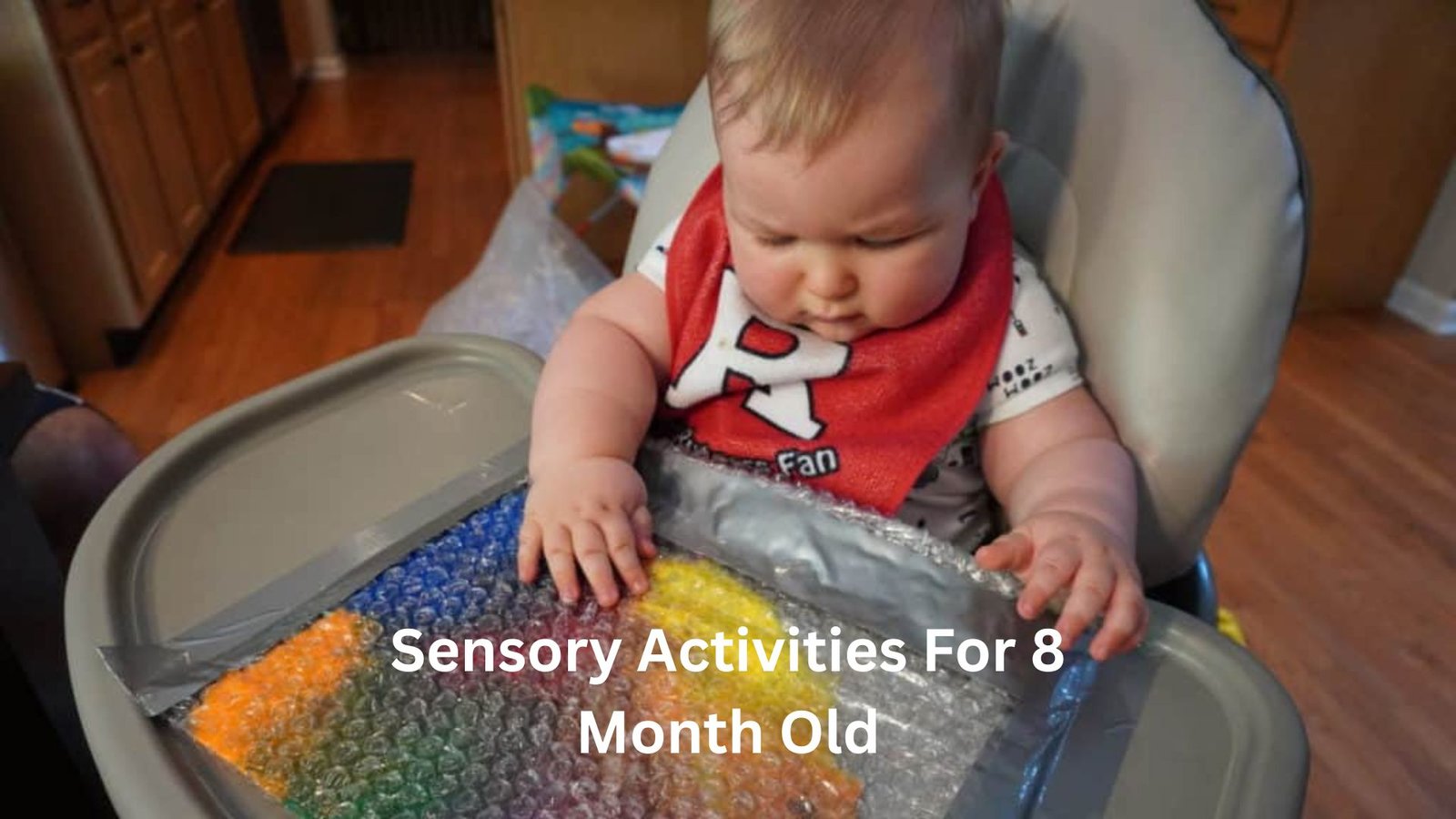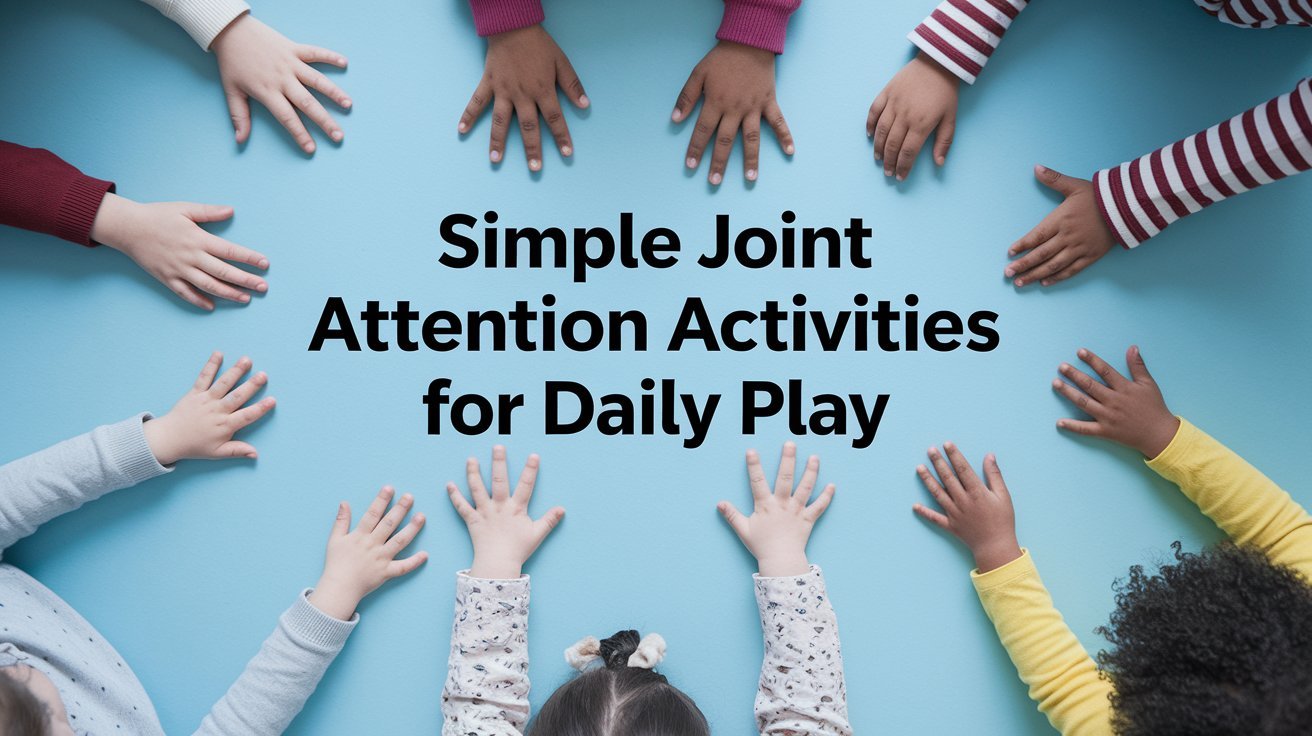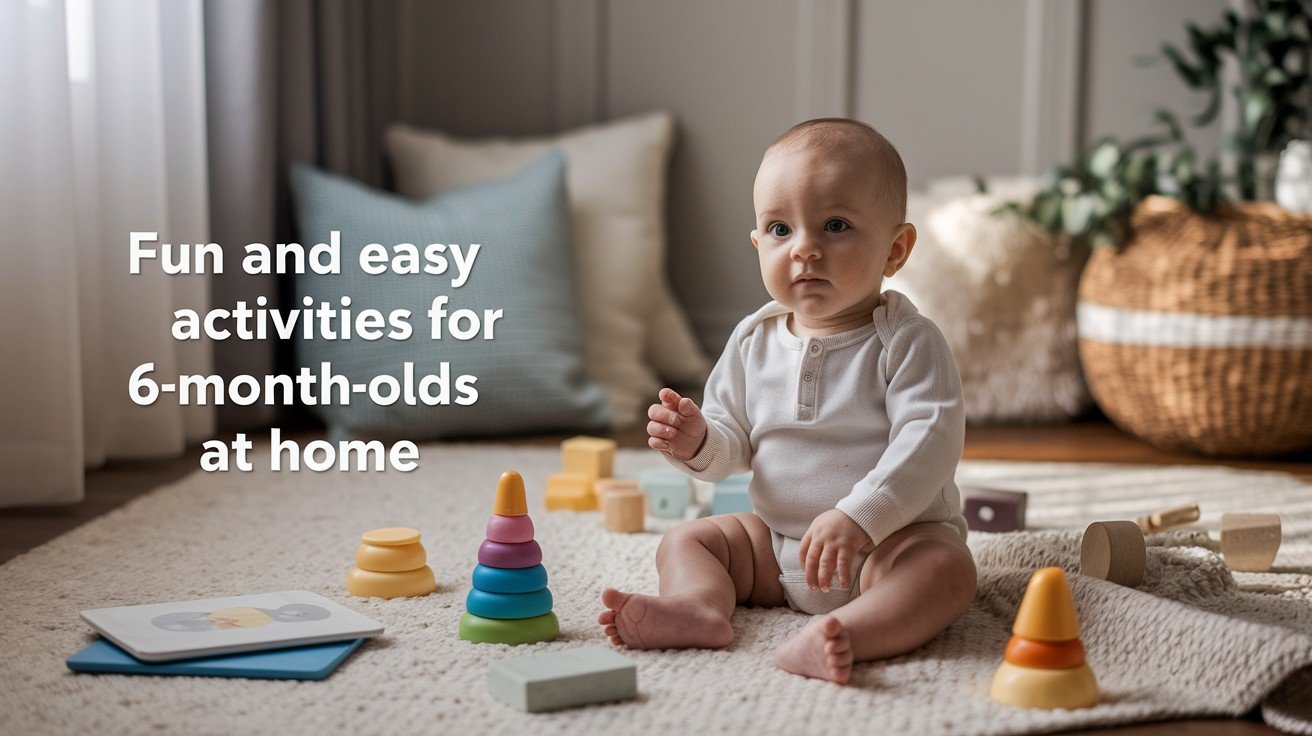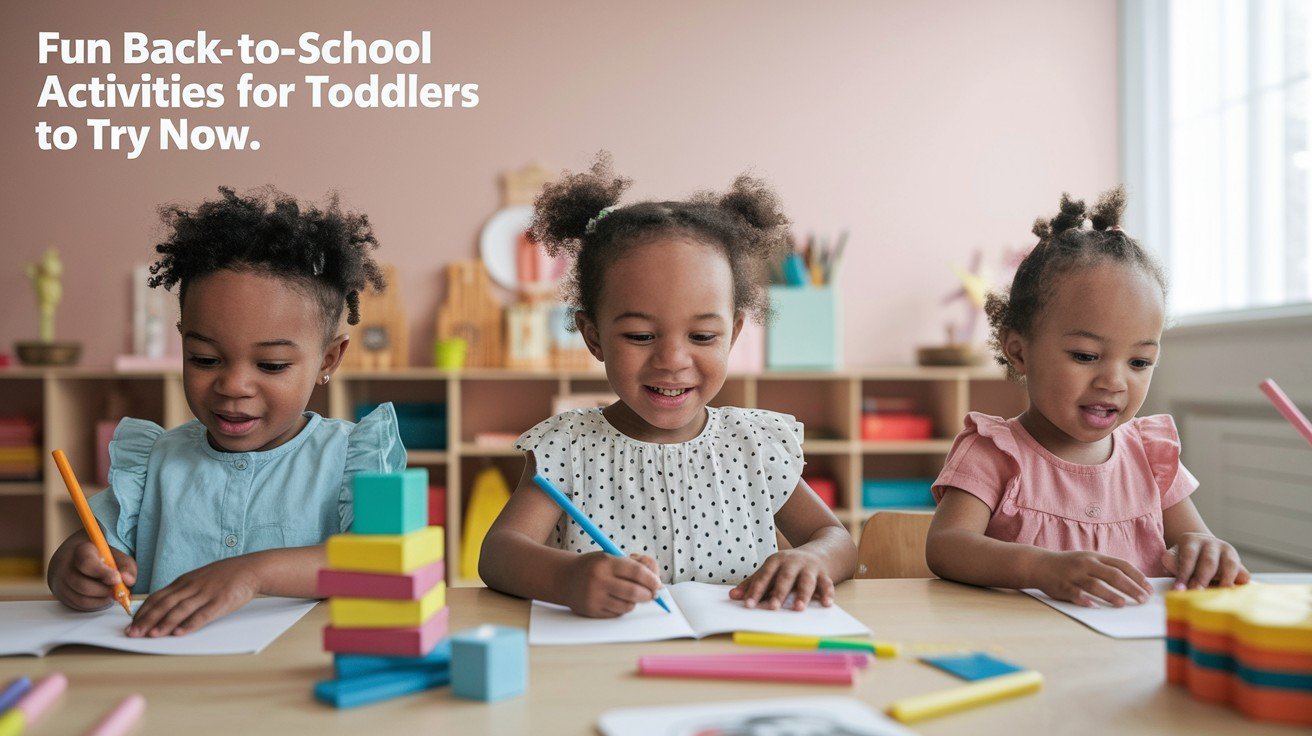Your 16-month-old changes at all times. They walk more confidently, also they try new words then which shows their own personality. Playful learning marks this stage, which is brimming with curiosity and energy.
Toddlers of this age learn efficiently. Practical exercises ensure a very fruitful education. They require activities allowing for touching, moving, and experimenting in their world. The good news? Toys that are expensive or setups that are complicated aren’t needed.
This guide shares some practical activities for those 16-month-old children that will then fit into your daily life routine. You will find ideas that support the development of your toddler, which include indoor play to outdoor fun.
Indoor Activities for 16-Month-Olds
Indoor play helps your toddler develop new skills while staying safe and comfortable at home, especially on rainy days or during quiet time.
Drawing and Scribbling
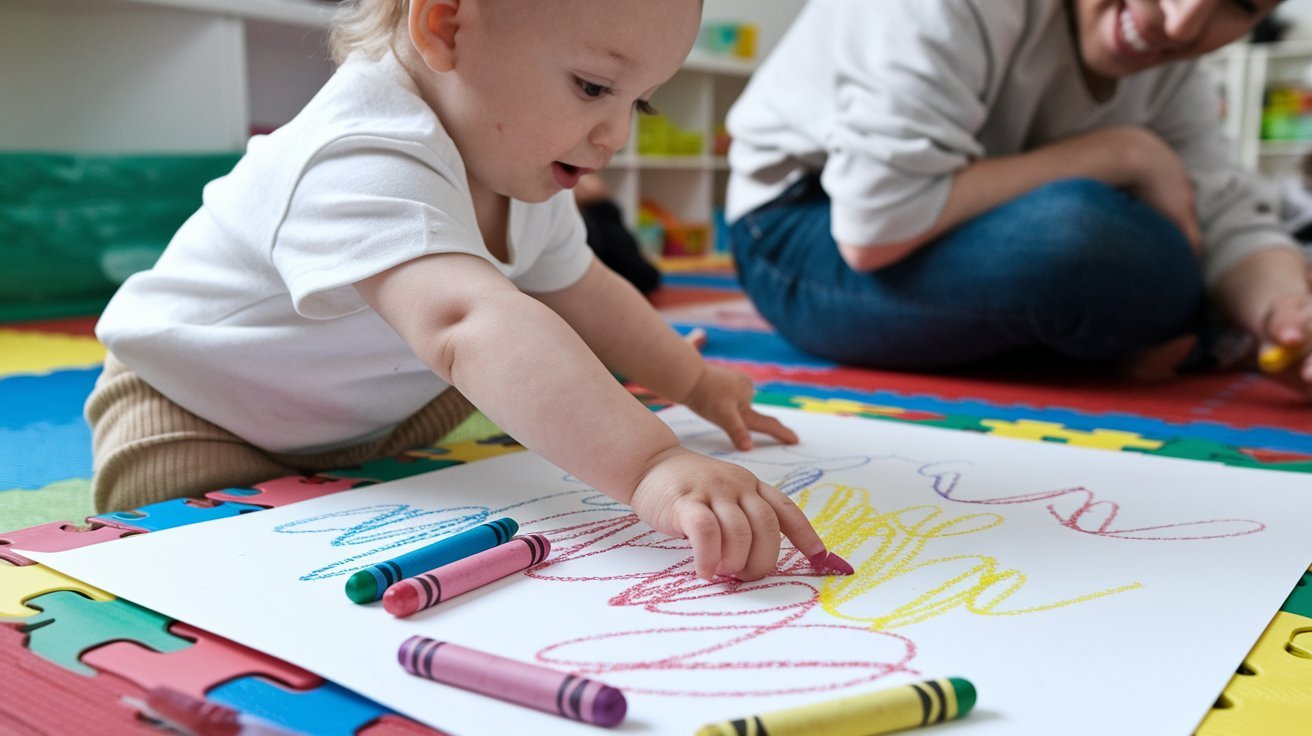
Your little one is ready to make their first marks on paper. Hand them a chunky, easy-grip crayon and watch their face light up as they see colors appear. This simple activity builds the small muscles in their hands that they’ll need for writing later.
Set up a safe space where your toddler can create freely. Tape large paper to a low table or use a washable mat on the floor. Sit beside them and scribble too; they love copying what you do. Keep the crayons limited to three or four colors at first so they’re not overwhelmed.
The mess is part of the learning. Choose washable crayons and protect surfaces with old towels or plastic sheets. Your child is learning to control their hand movements with every mark they make.
Play-Doh and Sensory Play
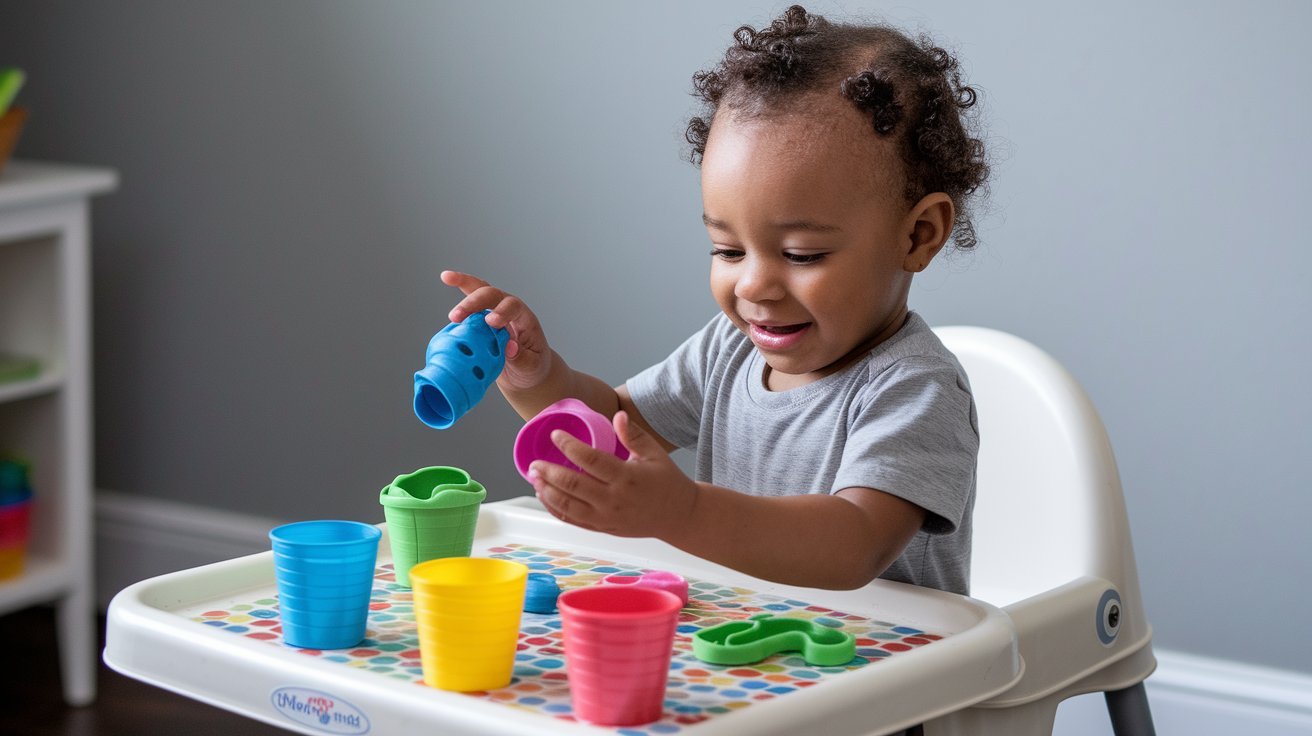
Squishing, rolling, and poking Play-Doh gives your toddler a wonderful sensory experience. Their hands grow stronger as they squeeze and shape the soft material. Start with homemade Play-Doh or store-bought versions that are safe if tasted because they probably will be.
Introduce Play-Doh when your child can follow simple directions like “keep it on the table.” A high chair tray or small table works well for containing the activity. Give them simple tools like cookie cutters or plastic cups to press into the dough. Show them how to roll and flatten it with their palms.
Yes, pieces will end up on the floor. Keep play sessions short at first, maybe 10 to 15 minutes. Stay close by to redirect if the Play-Doh heads toward mouths or hair. The sensory feedback they get from this squishy material helps them understand different textures and builds their creativity.
Sticker Play
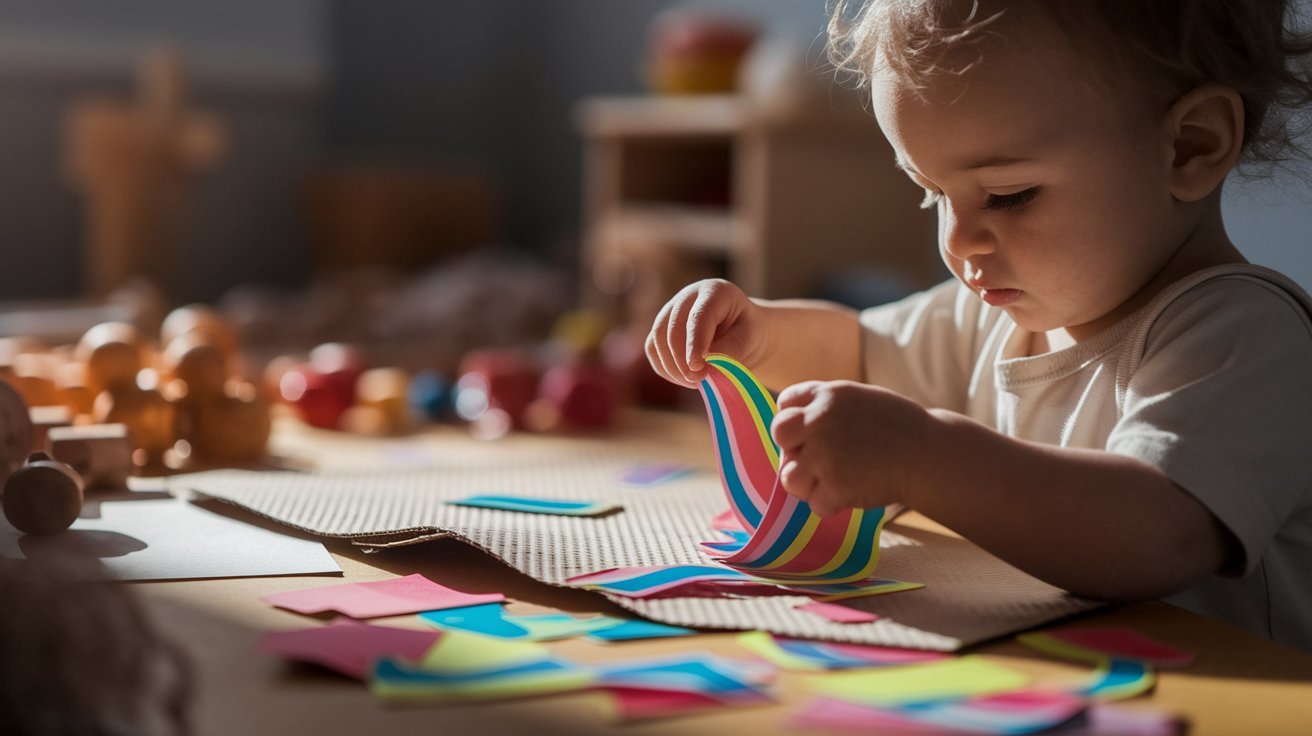
Stickers are perfect for 16-month-olds learning to use their pincer grasp. Peeling and sticking require focus and hand-eye coordination. Your toddler practices precise finger movements while having fun decorating paper, cardboard, or even a paper plate.
Choose large stickers that are easier for small fingers to handle. Peel the first sticker halfway and let your child finish pulling it off. They’ll stick them everywhere on the paper, on themselves, on the furniture. It’s all part of learning cause and effect.
Keep sticker time supervised since small pieces could be choking hazards. Give them one or two stickers at a time rather than the whole sheet. Watch their concentration as they carefully place each sticker. This quiet activity is great for building patience and focus.
Hide and Seek Variations
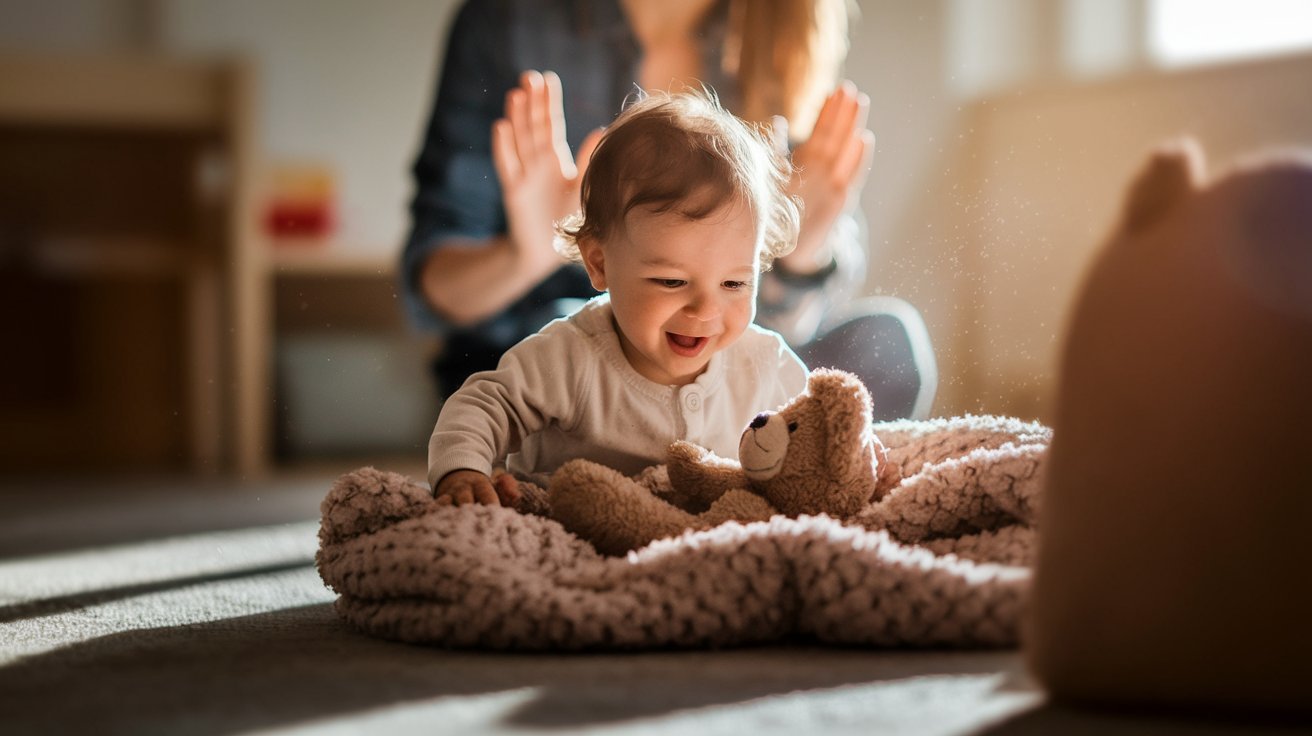
Hiding toys around the room creates excitement and teaches object permanence. Your toddler is learning that things still exist even when they can’t see them. Start simple, hide a favorite stuffed animal under a blanket or behind a pillow while they watch.
Make the game interactive by saying, “Where’Teddydy?” with an excited voice. When they find the toy, celebrate together with claps and smiles. As they get better at the game, hide objects in slightly harder spots.
This game builds memory skills and problem-solving abilities. Your child learns to search systematically and remember where things might be. The anticipation of finding the hidden object brings pure joy to their face.
Story Time
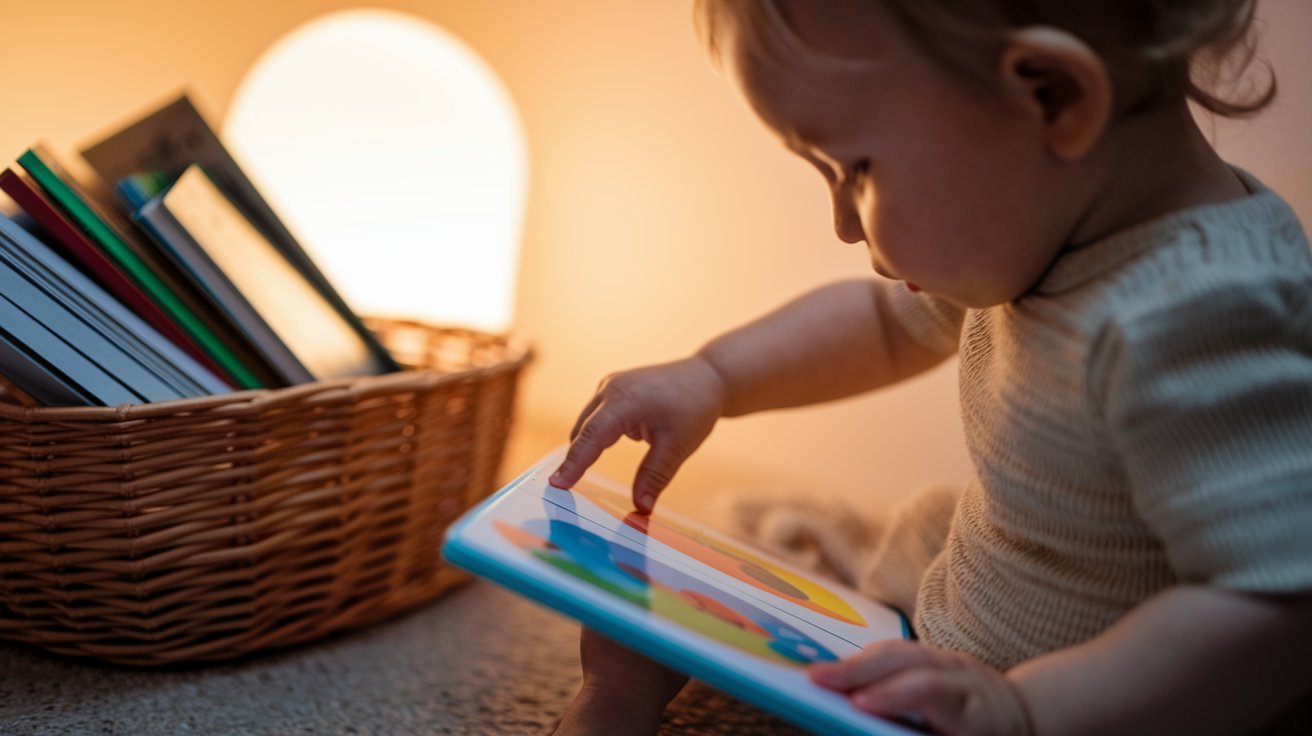
Books open up new worlds for your toddler. At 16 months, they love books with simple pictures, bright colors, and few words per page. Board books work best because they can handle rough treatment.
Make reading interactive by pointing to pictures and naming them. Let your child turn the pages, even if they skip some. They’re practicing hand coordination with each page flip. Use different voices for characters and make animal sounds.
Build a daily reading habit by having book time before naps or bedtime. Keep books accessible in a low basket so your toddler can choose what to read. Don’t worry if they want the same book twenty times in a row; repetition helps them learn.
Music and Movement
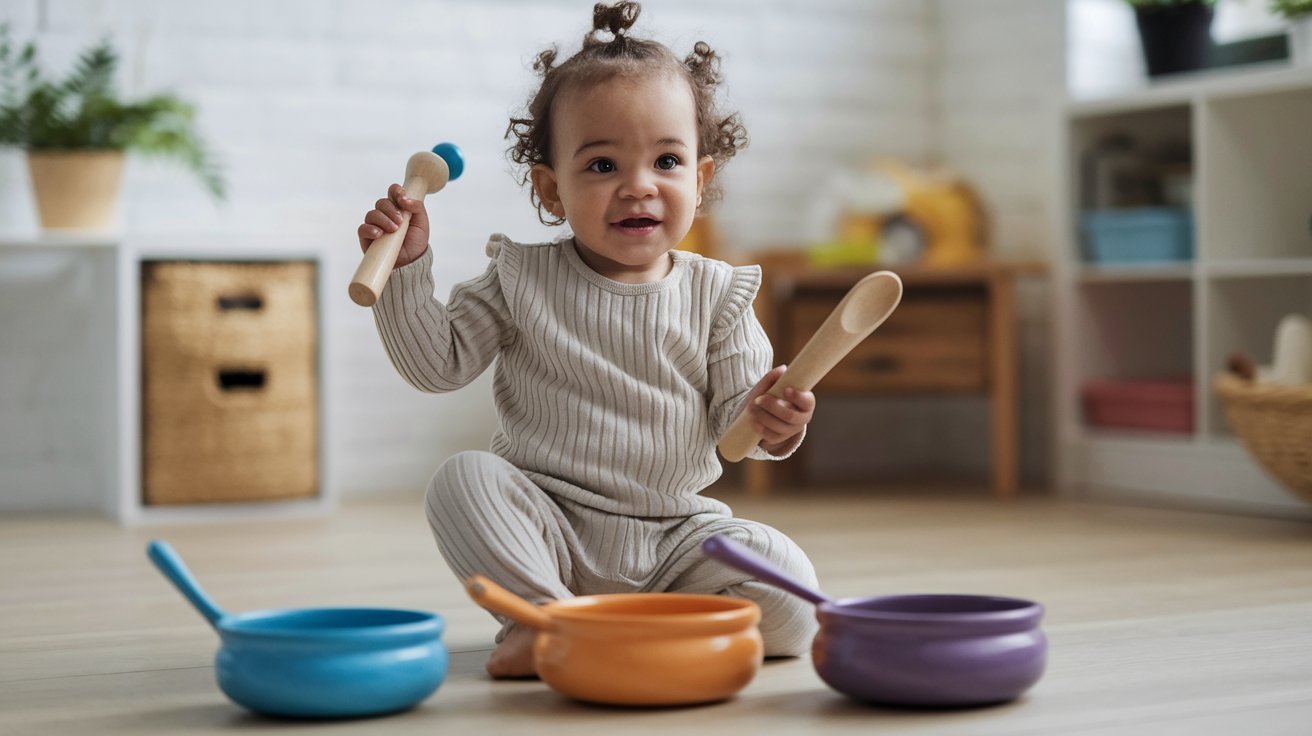
Music gets your toddler’s whole body involved in learning. Give them simple instruments like shakers, drums, or wooden spoons to bang on pots. They’re learning rhythm and cause-and-effect as they create sounds.
Put on different types of music and watch them move. Fast songs get them bouncing and spinning. Slow songs might get them swaying. Dance with them, holding their hands or lifting them.
Musical play burns energy and improves coordination. Your child practices balance as they move to the beat. Clapping songs teach them to copy actions and follow along. Keep instruments where they can reach them so music can happen throughout the day.
Tea Parties and Pretend Play
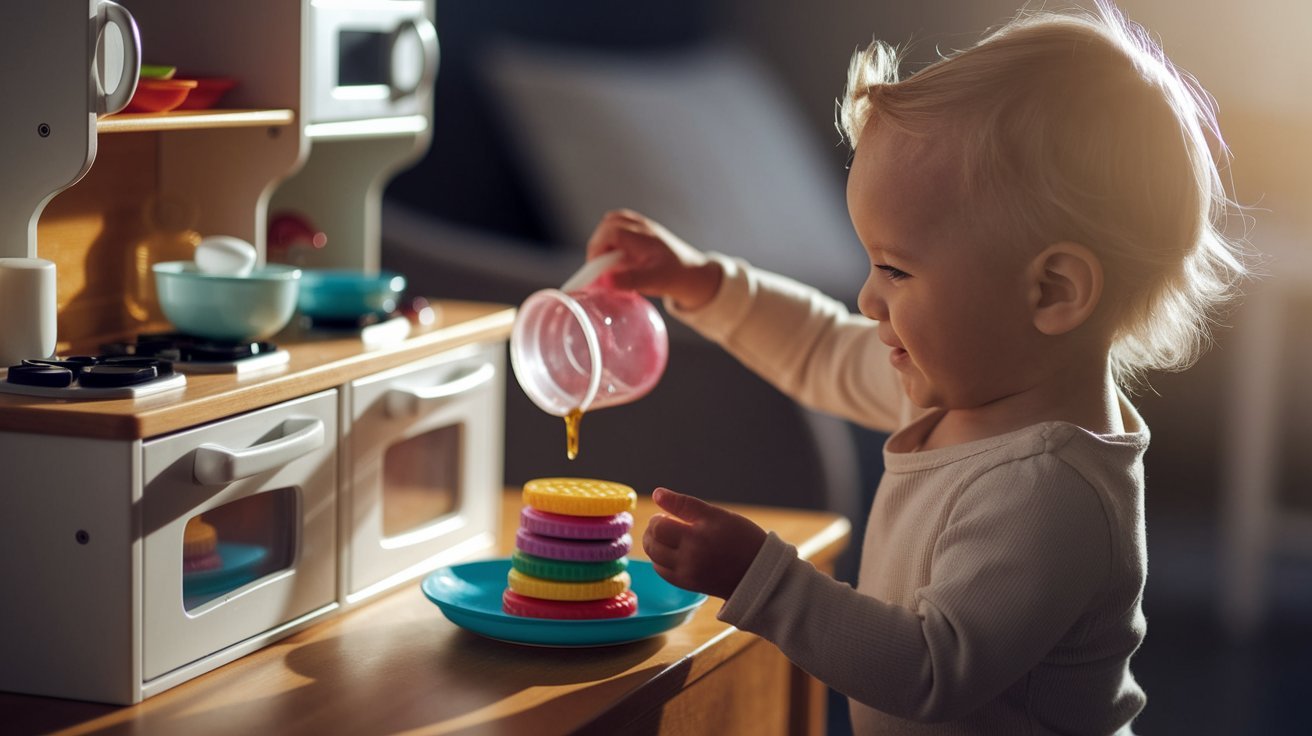
Pretend play shows that your toddler’s imagination is growing. A simple tea party with plastic cups and plates lets them copy what they see adults do. They’ll “pour” pretend tea and offer you pretend cookies.
Toy kitchen sets give endless opportunities for make-believe. Your child practices life skills as they pretend to cook, serve, and clean up. They’re learning about daily routines and taking care of others.
Pretend play teaches turn-taking and sharing. When they offer you a toy phone, pretend to talk and then give it back. They’re learning the back-and-forth of social interaction. These games might seem simple, but they build emotional intelligence and creativity.
Bubble Play
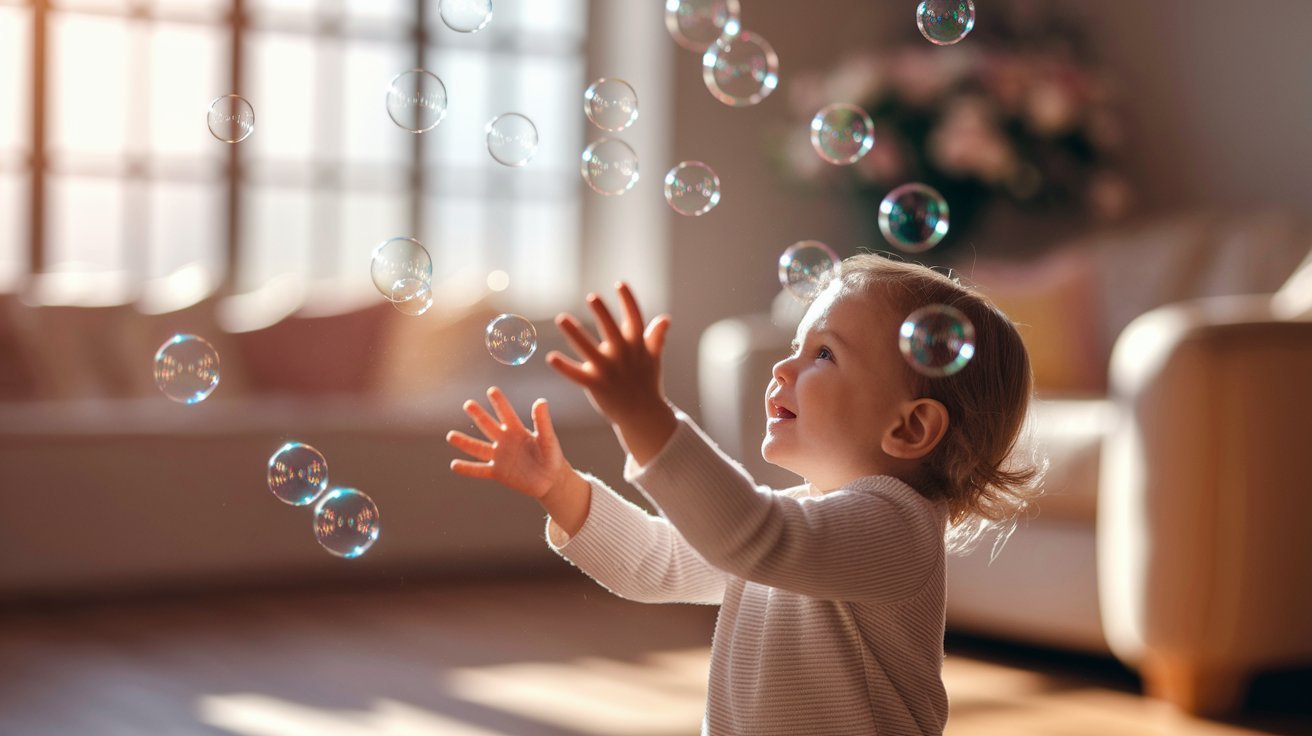
Bubbles create magic for toddlers. Blowing bubbles indoors (in bathrooms or kitchens where floors are easy to clean) gives your child something exciting to watch and chase. They practice tracking moving objects with their eyes and improve their hand-eye coordination when trying to catch them.
Show your toddler how to pop bubbles with one finger. They’ll giggle as bubbles burst on their hands. Some children try to catch bubbles in their mouths use non-toxic bubble solution just in case.
Try bubble alternatives on days you don’t want the mess. Pretend to blow bubbles and have your child pop imaginary ones. Or put bubble solution in a shallow tray and let them use a whisk to create foam.
Physical Play Indoors
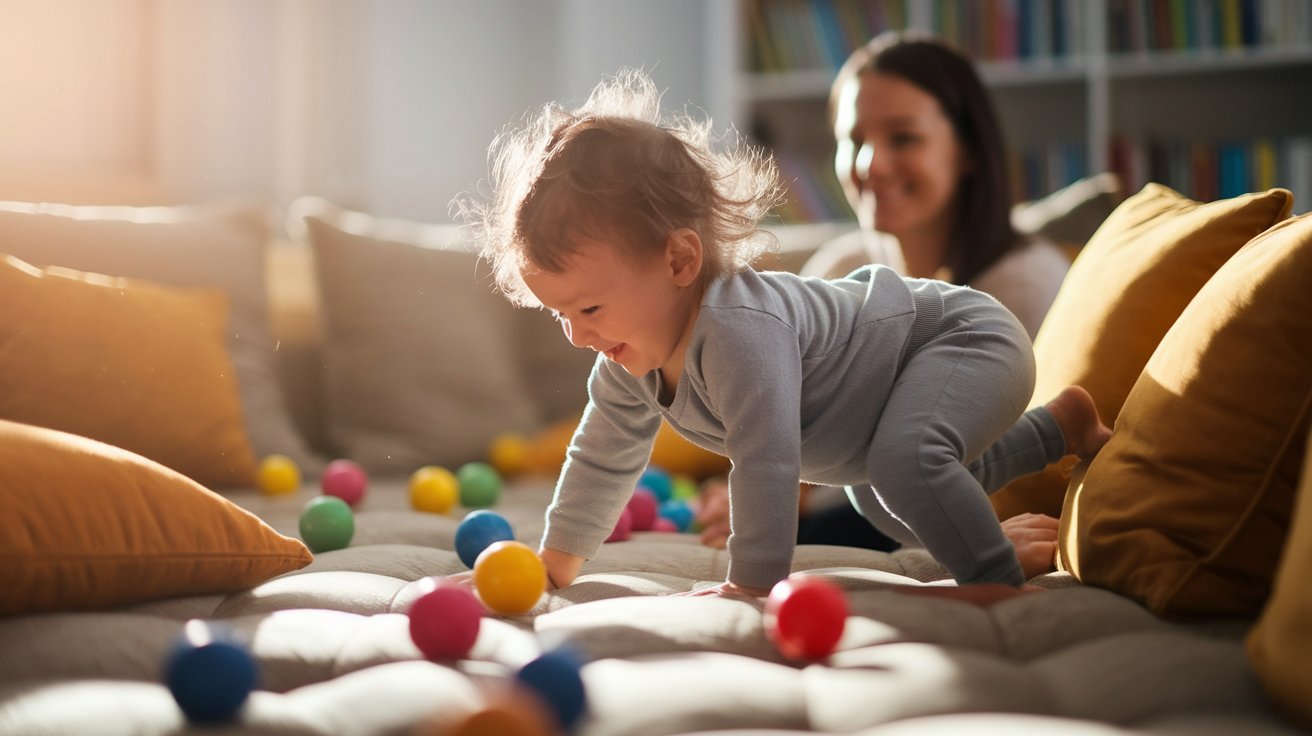
Your energetic toddler needs to move, even indoors. Gentle tickling games make them laugh and help them understand physical boundaries. Chase them around the room (letting them “win” by catching you first sometimes).
Create obstacle courses with couch cushions to climb over or crawl under. Hold their hands as they jump off small steps. Roll a ball back and forth across the floor. All this movement strengthens their muscles and improves balance.
Know when physical play is getting too wild. If your child seems overstimulated, switch to calmer activities. But regular active play is essential for their development. It helps them sleep better and improves their mood.
Gross Motor Practical Life
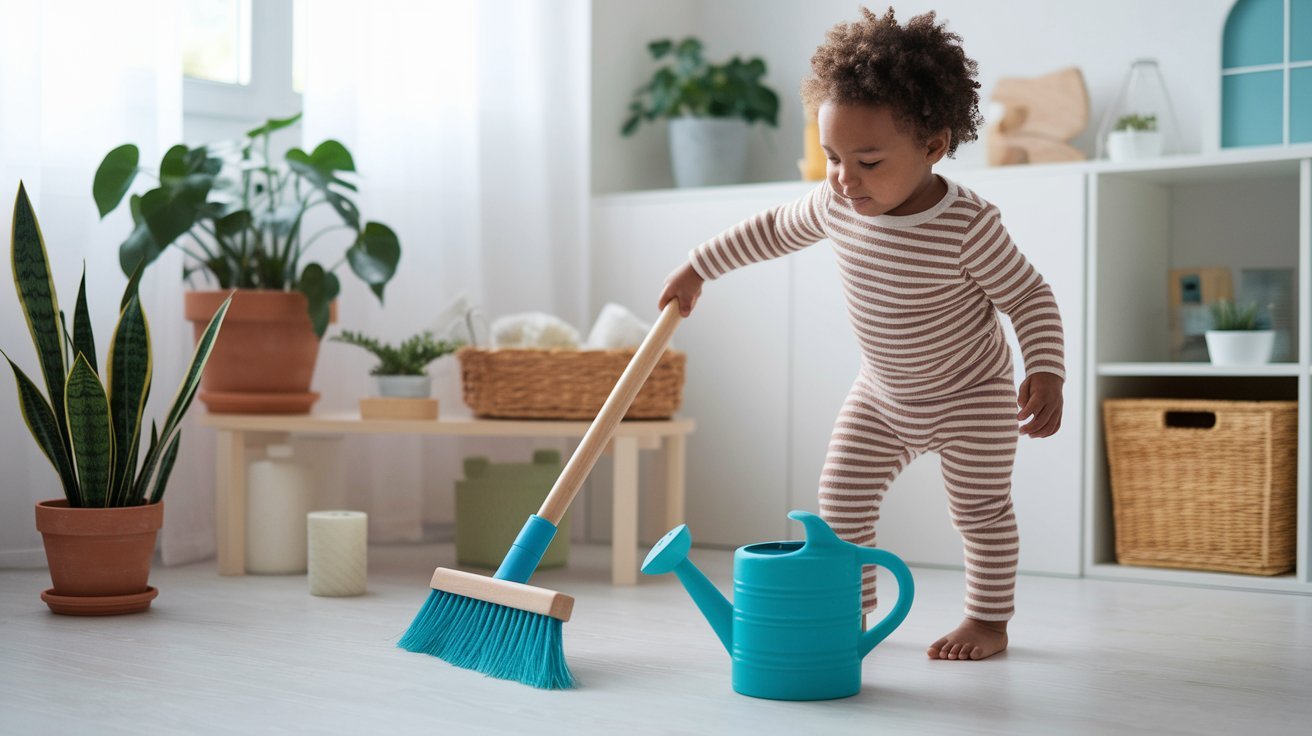
Real work feels like play to your toddler. Give them a child-sized broom and show them how to sweep. They won’t do it perfectly, but they’re building coordination and learning to help. Dusting low shelves with a small cloth makes them feel capable and included in family tasks.
Let your child help water plants with a small watering can. They practice pouring and learn to be gentle with living things. Hanging their own coat on a low hook teaches independence. Even walking from room to room carrying safe objects builds their strength and balance.
These practical activities build confidence. Your toddler learns they can do real things that matter. The repetition of daily tasks like sweeping or hanging coats helps them master new skills. They’re developing both physical abilities and a sense of responsibility.
Fine Motor Practical Life
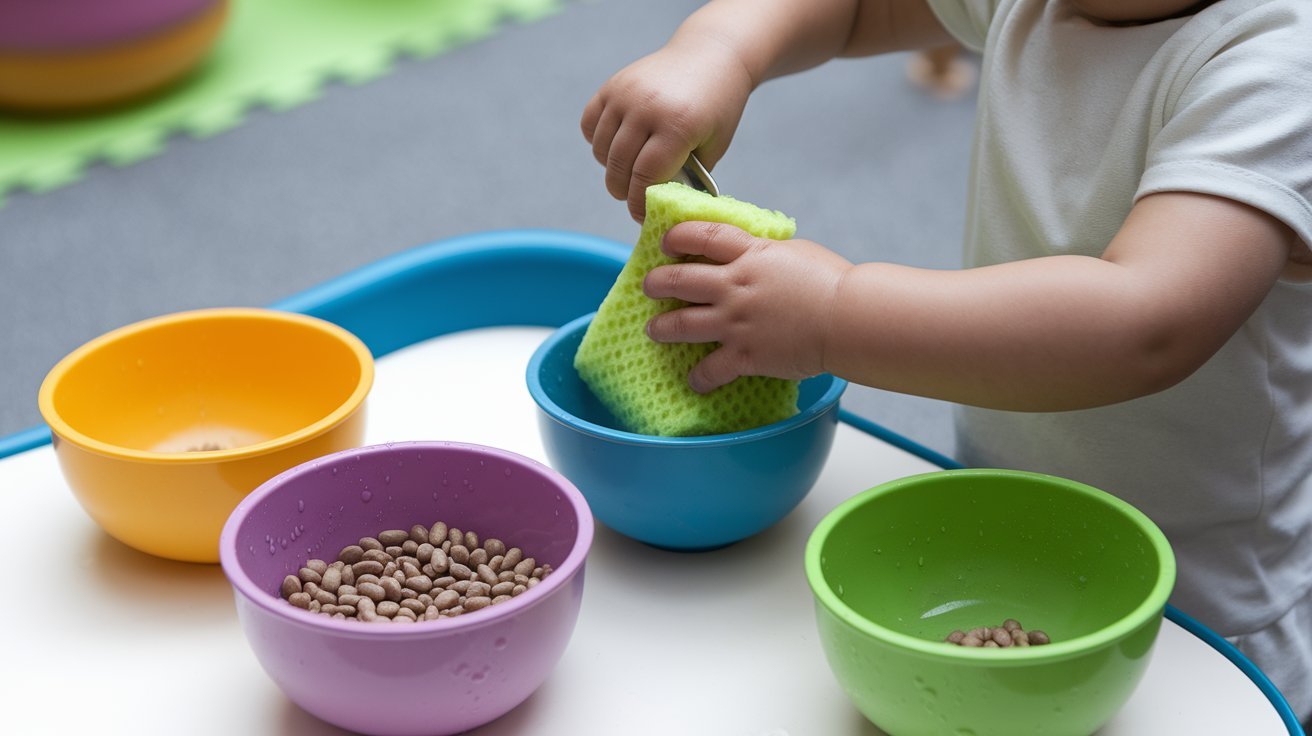
Small, precise movements need lots of practice. Give your toddler two bowls and a spoon, and let them transfer dry beans or pasta from one to the other. This simple activity builds the coordination they need for feeding themselves.
Sponging activities are perfect for little hands. Show them how to squeeze water from a sponge into a bowl. They’re strengthening their hand muscles while learning about water and absorption.
Pouring is harder than it looks for small hands. Start with dry materials like rice between two cups. Then move to water with very small amounts. Taking off their own shoes and socks builds independence.
Outdoor Activities for 16-Month-Olds
Fresh air and outdoor play give your toddler space to move freely and experience nature’s sensory-rich environment.
Building and Construction
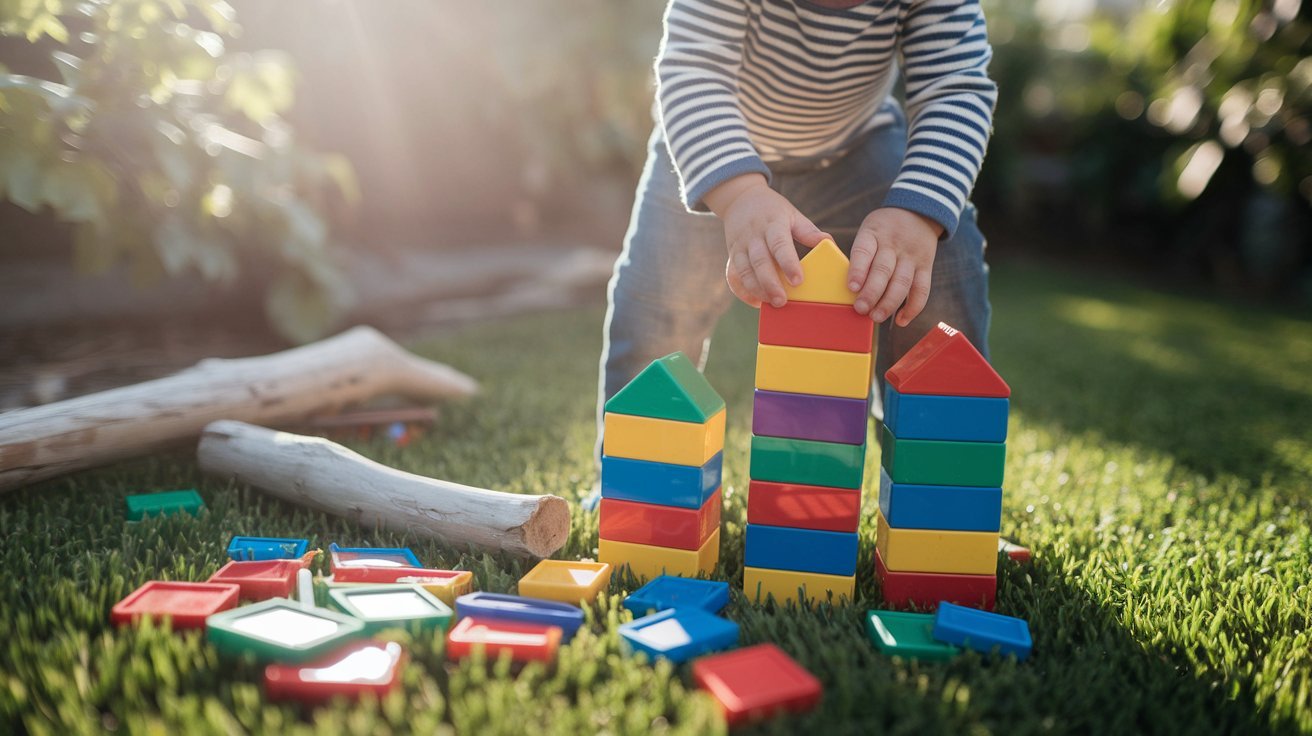
Large building blocks let your toddler stack and knock down towers repeatedly. They’re learning about balance, gravity, and spatial relationships. Duplos work better than regular Legos at this age; they’re easier to grip and connect.
Magnetic tiles create satisfying clicks when they connect. Your toddler can build flat designs or simple structures. The colors and shapes capture their attention while building math concepts. Sit nearby and build your own creation.
Construction play happens anywhere indoors or outdoors. Outside, add natural materials like sticks or smooth stones to building activities. Your child’s spatial awareness grows with every tower they build and every structure they knock down.
Outdoor Water Play
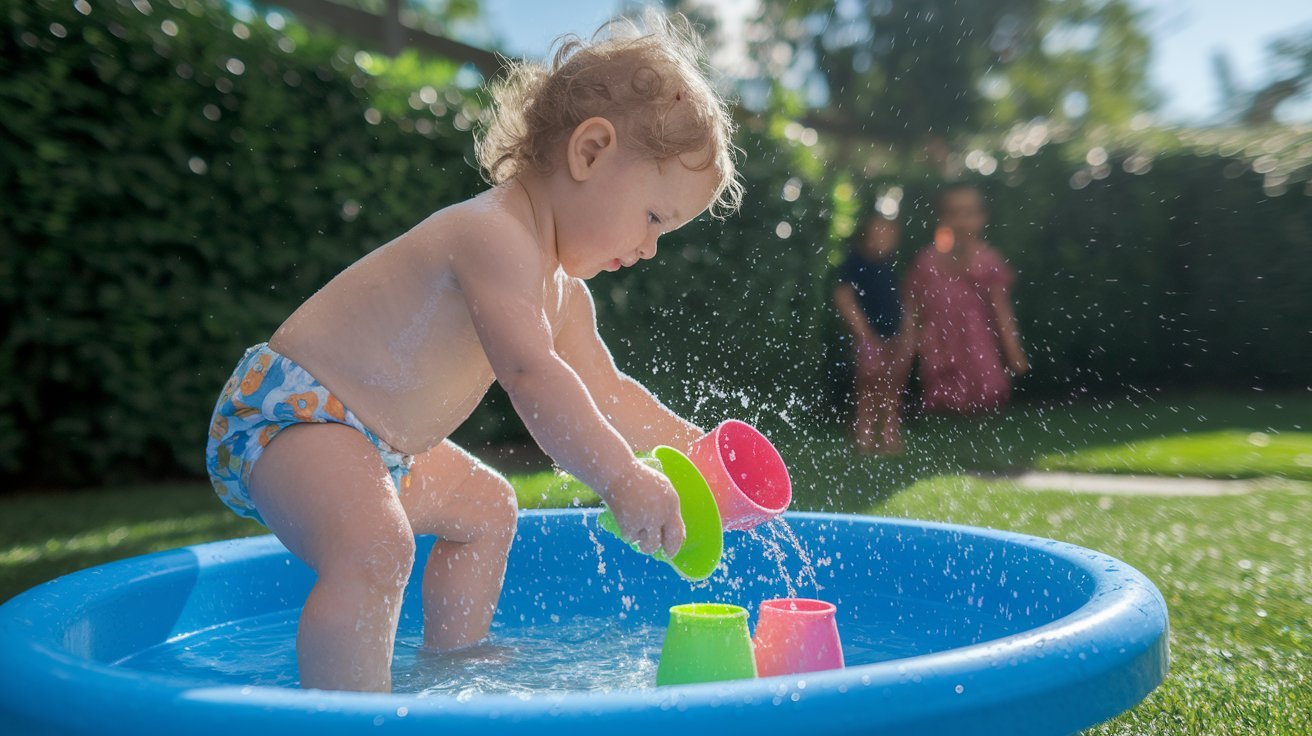
Water tables give hours of entertainment on warm days. Fill a shallow bin with a few inches of water and add cups, funnels, and toys. Your toddler learns about pouring, floating, and sinking. They practice hand-eye coordination as they scoop and transfer water.
Always supervise water play closely; even shallow water requires your full attention. Dress them in clothes that can get wet or just a diaper. Let them splash and experiment. They’re learning about cause and effect as they see what happens when they pour water from different heights.
Save water play for pleasant weather days. A small sprinkler or hose on low pressure creates excitement. Let them run through the spray or fill buckets. Water play is naturally calming and helps toddlers focus.
Open and Close Activities
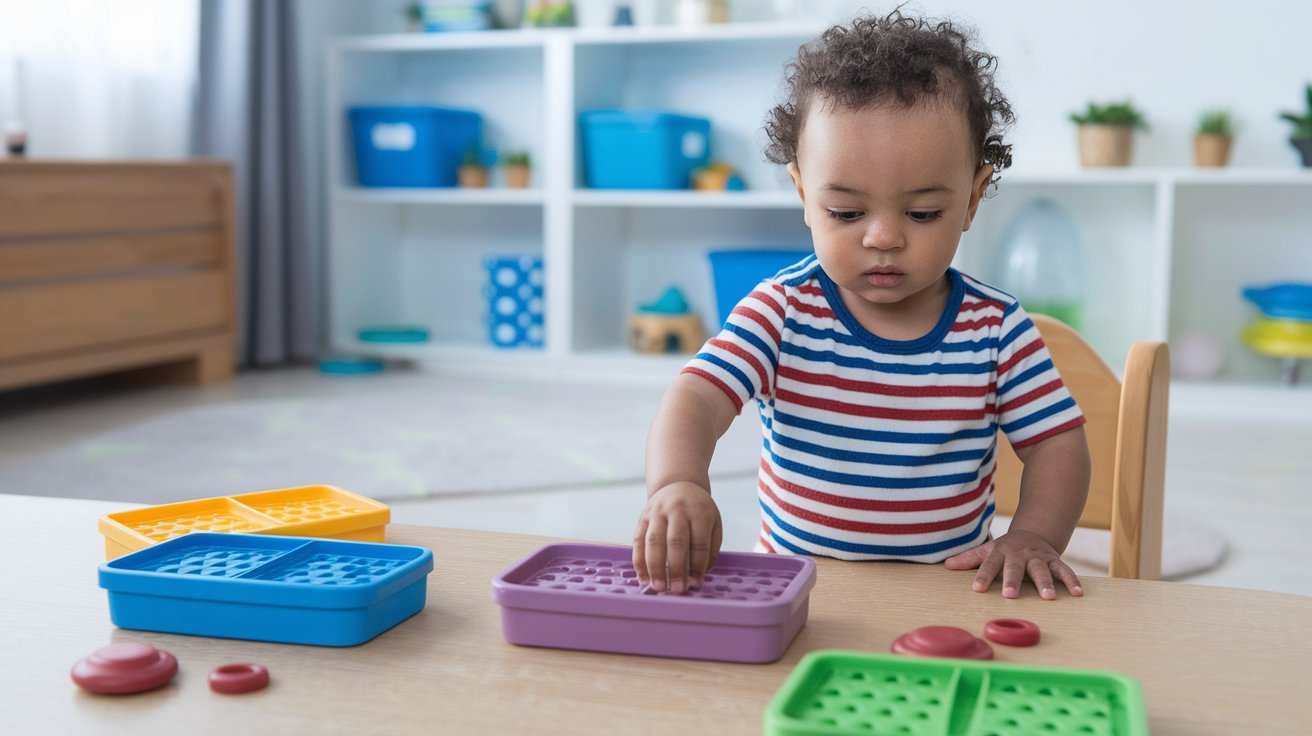
Containers with lids fascinate toddlers. Collect safe containers in different sizes, plastic food containers, boxes with hinged lids, and baskets with clasps. Your child practices fine motor control as they work to open and close each one.
Latch boards with different types of closures challenge your toddler’s thinking. They learn that different mechanisms require different actions. Sliding lid boxes are especially satisfying; they love the surprise of opening them to find small toys inside.
These activities build the hand strength needed for many daily tasks. Your child is learning how things work mechanically. Start with easier containers and gradually introduce harder ones as their skills grow.
Balls and Pegs
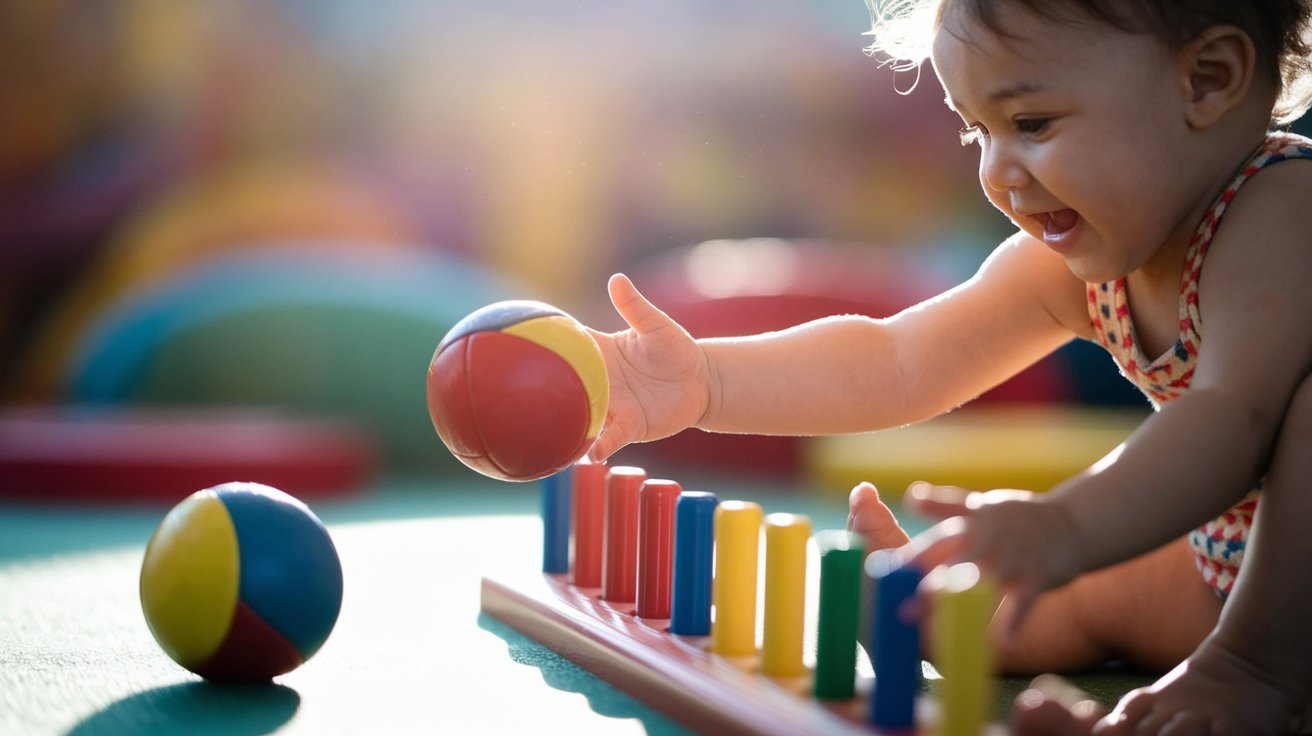
A simple posting activity dropping balls onto vertical pegs teaches hand-eye coordination. Your toddler aims and releases, watching the ball land on the peg. This activity prepares them for more complex toys later.
Introduce ball play outdoors where there’s more space. Show them how to kick a softball. Their kicks might miss the ball completely at first, but they’re building leg strength and balance. Rolling a ball back and forth teaches turn-taking and social play.
Throwing practice needs supervision and softballs. Your child learns to aim and release. They’re understanding distance and force, throwing gently versus throwing hard. Sports play at this age is about movement exploration, not rules or competition.
Pegboard Play
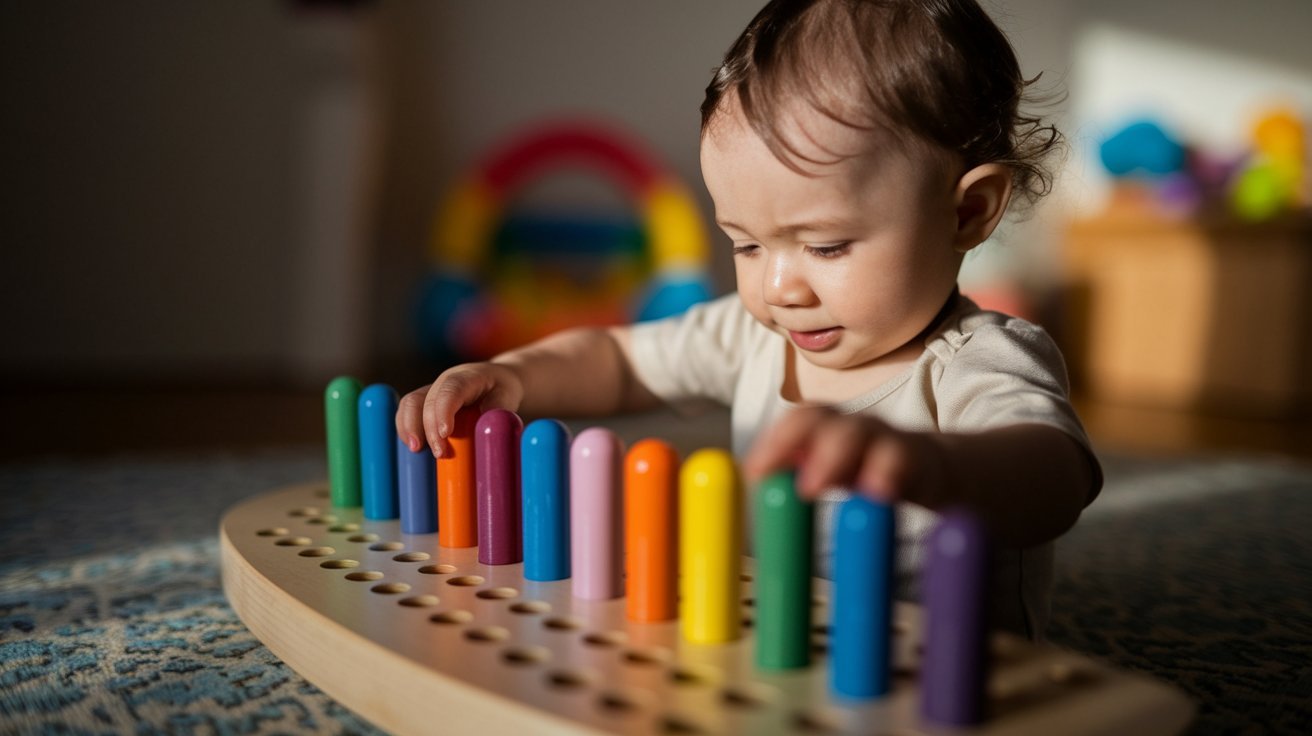
Large pegs and pegboards build concentration and fine motor skills. Your toddler grasps each peg and pushes it into a hole. This precise movement strengthens the small muscles in their hands.
Pegboard activities prepare them for threading beads later on. The same hand movements and focus will transfer to more complex tasks. Choose pegboards with large, easy-to-grasp pegs designed for toddlers.
Watch your child’s focus during peg play. They might work intently for several minutes, placing each peg carefully. This quiet concentration builds their attention span. When they fill all the holes, they feel accomplished.
Tips for Parents
Creating the right environment and approach makes activities for 16-month-old children more successful and enjoyable for everyone.
- Keep activity supplies organized in bins by type of art supplies together, building toys together.
- Set up quick activities in high-traffic areas so your child can play while you’re nearby.
- Use low shelves where your toddler can see and reach toys independently
- Rotate toys weekly to keep interest high, box up some toys, and bring out others
- Have cleanup supplies ready (wipes, towels) before starting messy activities
- Model activities slowly without talking too much, let them watch and copy
- Allow your child to repeat the same activity many times. Repetition builds skills
- Follow their lead when they show interest in something specific
- Step back and observe rather than directing every moment of play
- Let them explore materials in their own way, even if it’s not how you planned
- Choose hard floors over carpet for messy activities to make cleanup easier
- Remove small items that could be choking hazards from play areas
- Give constant supervision during water play, small object activities, and outdoor time
- Create safe spaces where your toddler can explore freely without hearing “no” constantly
- Check toys regularly for broken pieces or sharp edges
- Mix active play with quiet activities throughout the day
- Include practical life tasks (helping sweep, putting away toys) as learning opportunities
- Make outdoor time a priority every day when the weather allows
- Built in rest and downtime, toddlers need breaks to process all they’re learning
- Keep activities short (10-20 minutes) and switch when interest fades
Conclusion
Your 16-month-old needs absolutely no complicated activities for growth and learning. Simple, hands-on experiences use everyday materials, plus they support their development beautifully. From scribbling with some crayons.
Your toddler learns via repetition, so remember that. Recall also that your toddler learns through exploration. To you, a thing might seem to be boring. That same something might seem fascinating to them.
Start small this week. Try just one new activity with your own child that is selected from that list. See their face light up as they learn anew. The early years pass by quickly, but the foundation you’re building is important.
Frequently Asked Questions
What are the best indoor activities for 16-month-old toddlers?
Drawing with chunky crayons, Play-Doh exploration, sticker play, and simple hide-and-seek games work well indoors. These activities build fine motor skills and keep toddlers engaged. Practical life tasks like helping sweep or water plants also make excellent indoor activities.
How long should activities for 16-month-old children last?
Most 16-month-olds focus on activities for 10-20 minutes before moving on. Some days they’ll engage longer, other days shorter. Follow your child’s interest level. When they start wandering away or getting frustrated, it’s time to switch activities or take a break.
What outdoor activities work best for 16-month-olds?
Water play, ball games, and building with blocks outdoors give toddlers space to move freely. Walking on different surfaces, collecting natural objects, and playing in sand or dirt provide sensory experiences.
How can I keep my 16-month-old engaged throughout the day?
Rotate between active and quiet activities, follow your child’s interests, and include them in daily tasks. Keep activities simple and don’t overschedule. Let them repeat favorite activities. Repetition helps learning.
Are expensive toys necessary for 16-month-old development?
No, simple household items work just as well as expensive toys. Bowls and spoons for transferring, containers to open and close, and paper with crayons provide excellent learning opportunities.
